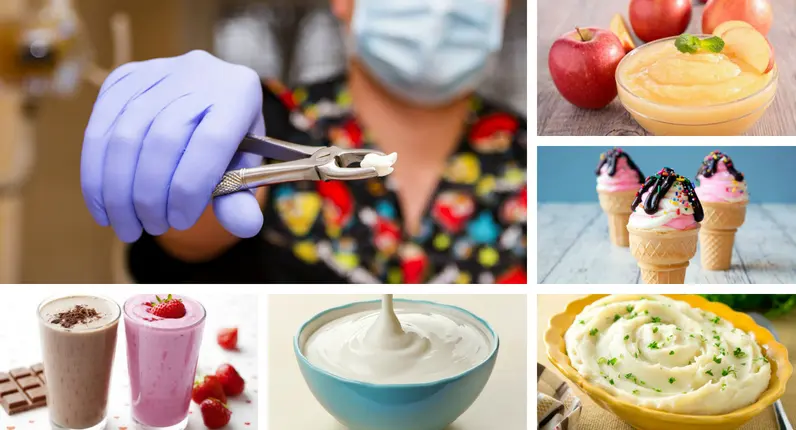Navigating the Post-Extraction Diet: Delicious Options for a Speedy Wisdom Teeth Recovery
So you’ve conquered wisdom teeth removal – congratulations! But now comes the not-so-glamorous part: recovery. While visions of your favorite burger or crunchy salad might dance in your head, your mouth needs some time to heal. A crucial aspect of this healing process involves sticking to a specific diet that minimizes discomfort and promotes optimal healing. This comprehensive guide explores what you can eat after wisdom teeth removal, offers delicious recipe ideas, and provides valuable tips for a smooth recovery.
Understanding the Initial Phase: Soft Food Supremacy (First 24-48 Hours)
Following wisdom teeth removal, your dentist will likely recommend a soft food diet for the first 24-48 hours. This allows the extraction site to heal without irritation from chewing. Here are some excellent choices to keep you nourished during this initial phase:
- Smoothies: Blend fruits, yogurt, and protein powder for a delicious and nutritious drink.
- Applesauce: Unsweetened applesauce is a great source of vitamins and fiber and requires minimal chewing. Opt for organic varieties whenever possible.
- Mashed Potatoes: Mashed potatoes are a classic comfort food that’s easy to swallow and digest. Consider adding a dollop of plain yogurt for extra protein.
- Yogurt: Plain yogurt is a good source of protein and probiotics, which can aid digestion. Look for varieties with live and active cultures for added benefits.
- Soups: Opt for blended soups or broths with soft noodles or vegetables. Avoid chunky soups that might require excessive chewing.
Recipe Inspiration:
- Tropical Power Smoothie: Blend together frozen mango, banana, pineapple chunks, plain yogurt, and a splash of coconut milk for a taste of the tropics.
- Creamy Mashed Potatoes with Herbs: Mash cooked potatoes with a dollop of low-fat milk, olive oil, salt, and pepper. Stir in chopped fresh herbs like chives or parsley for extra flavor.
Transitioning Towards Soft Solids (Days 3-7)
As the swelling subsides and discomfort lessens, you can gradually introduce soft solids into your diet. Here are some options to consider:
- Scrambled Eggs: Scrambled eggs are a protein powerhouse and a gentle option for your recovering mouth. Experiment with adding chopped vegetables like spinach or mushrooms for extra nutrients.
- Well-Cooked Pasta: Opt for soft, well-cooked pasta dishes like macaroni and cheese or creamy pasta with ricotta and vegetables.
- Soft Fish: Flaky, well-cooked fish like salmon or cod are easy to digest and provide essential omega-3 fatty acids.
- Refried Beans: Mashed refried beans offer protein and fiber and can be incorporated into soft tacos or wraps with tortillas.
- Oatmeal: Oatmeal is a comforting and nutritious breakfast option. Choose rolled oats for a more filling texture and add mashed fruits or a drizzle of honey for sweetness.
Recipe Inspiration:
- Salmon with Creamy Dill Sauce: Bake or poach salmon fillets and top them with a simple sauce made of plain yogurt, chopped fresh dill, lemon juice, and a pinch of salt.
- Veggie-Packed Scrambled Eggs: Whisk eggs with chopped spinach, diced tomatoes, and crumbled feta cheese. Cook over low heat until set, creating a protein and veggie-rich scramble.
Reintroducing Regular Foods (Week 2 and Beyond)
By week two, you should be able to gradually reintroduce regular foods back into your diet. However, listen to your body and avoid anything too hard, chewy, or spicy that could irritate the extraction site. Here are some tips for this phase:
- Start with Soft Meats: Ground meats like chicken or turkey burgers are easier to manage than tougher cuts.
- Chopped Vegetables: Introduce chopped vegetables like steamed carrots or green beans. Avoid raw vegetables that might be difficult to chew.
- Bread and Cereals: Opt for soft bread like white bread or soft rolls. Choose cereals that are easy to chew, like puffed rice or flakes.
Remember: This is a general guideline. The pace of reintroducing regular foods will vary depending on your individual healing process. Always prioritize comfort and avoid forcing yourself to eat anything that causes discomfort.
Additional Tips for a Smooth Recovery:
- Stay Hydrated: Drinking plenty of fluids is crucial for optimal healing. Opt for water, clear broths, and sugar-free drinks.
- Maintain Oral Hygiene: Gently brush your teeth twice a day, avoiding the extraction site. Use a soft-bristled toothbrush and rinse with lukewarm salt water several times a day.

